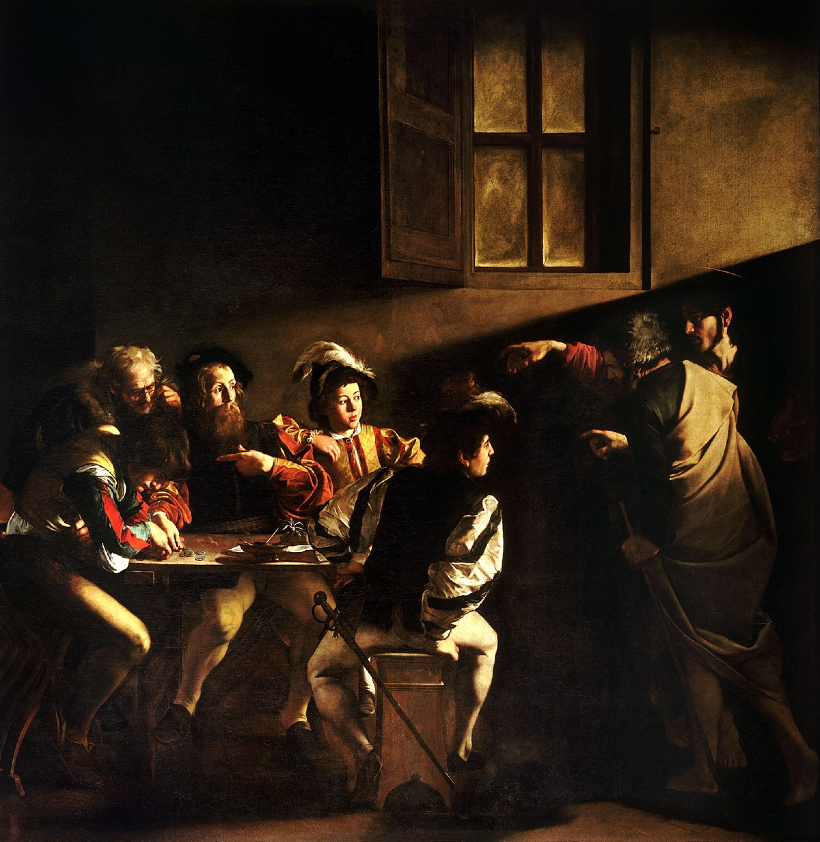
The Calling of St. Matthew by Caravaggio
As a contemporary of Raphael, Caravaggio uses the three objectives: catechesis, meditation, and participation in his paintings. In his The Calling of St. Matthew (photo above), for example, Caravaggio is informing the viewers how Jesus calls us by showing how Jesus called St. Matthew. This painting causes us to reflect and meditate on how we react to that calling by providing us with examples of how we might answer Jesus in the men at the table. Caravaggio brings his audience into his paintings by having those at the table dress in the Roman fashion of his time, while Jesus and Peter are dressed in their togas. Thus, Christ, the same Christ who walked among us during the governance of Pontius Pilate in Jerusalem, is calling us. In addition to these objectives, Caravaggio adds to his work three more themes: conversion, vocation and penitence.
The conversion of St. Matthew is seen in Caravaggio’s manipulation of time in the men at the table. The young man sitting to the left of the table is thought by some to be a young St. Matthew; and the bearded man is the St. Matthew who is ready to answer the call of Jesus. If these are true, then the young St. Matthew would be pre-conversion and the bearded St. Matthew post-conversion. Further, since Caravaggio would have us identify with the men at the table, he asks us, “Where are we in our conversion?”
Vocation, in Caravaggio’s paintings, is not only for St. Matthew. The Calling of St. Matthew shows us how we are called by Jesus in the three hands. The three pointing hands belong to Jesus, Peter, and St. Matthew, all of which are pointing at St. Matthew. By these hands, Jesus is calling, St. Peter, representing the Church, is repeating the call, and St. Matthew is answering the call.
Penitence is more difficult to find in this painting, but it is still there. If one defines penitence as “the taking on of suffering in order to serve Christ,” then the penitence is Matthew’s answer to Christ. When St. Matthew says “yes,” leaving his family, his friends, his job, everything to follow the call of Jesus, he is committing an act of penitence.
Resources: our Virtual Pilgrimage on Caravaggio (coming soon to YouTube)








Leave A Comment
You must be logged in to post a comment.